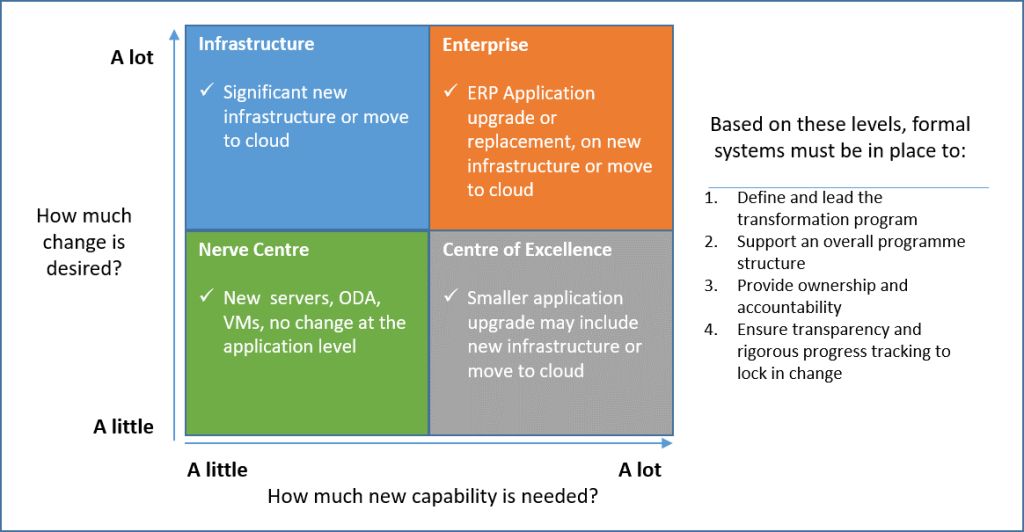Plan quick wins
Establishing Quick Wins in a Changing Environment
Establishing Quick wins is about Planning, implementing, and monitoring changes in any organisation. It is one of the essential activities to engage people motivate them to join your vision.
- Quick wins are essential as leap the casem from Informed Pessimism to informed optimism. Quick wins allow employees to build momentum and create a sense of urgency and excitement about change. Identifying early opportunities to deliver realised change, complete and celebrate success to drive adoption is the lifecycle of a quickwins. This can achieved by running a pilot with the early adopters.
- Quick wins are the catalyst for transformation success. Quick wins are significant because they confirm progress towards the ultimate goal. Either positively or negatively they help to keep everyone motivated and focused on the change at hand. Quick wins accelerate the adoption and resistance cycle engaging all stakeholders, provide valuable feedback, and help pave the way for long-term success.
- Rapid victories assist in silencing detractors. If you can demonstrate progress, people are reluctant to resist the change. In any organisation uncertainty about change can be expressed as resistance. Naturally most people are not early adoptor and therefore the majority require cultural permission accept and adopt the new ways of working.
Key Objectives for Quick Wins
- Focus on collective quick wins to ensure change has a successful start. Understand how this exhibits itself and can be communicated to all stakeholders.
- Score collective quick wins by creating believers, not spectators. Change needs to be felt by those which it impacts. Quick wins allow tangiable examples which can be referred to and shared. They also provide early adoptors and success stories to penetrate into the organisation and convert spectators to believers.
Defining Quick Wins
A quick win is a significant, positive accomplishment that can be achieved within a short-term timeframe. A short-term time frame is relative to the project timeline.
These successes are not about short-term change benefits but instead highlight the hard work and dedication of everyone involved, identifying and rewarding the current desired processes in the present landscape and clearly creating awareness and desire for change. Once Quick Wins have been identified and agreed to, it is essential to ensure they are planned and scheduled and the required resources to develop and implement are allocated. It is also necessary to communicate the implementation and results of quick wins and consistently demonstrate how they achieve the larger objectives. Quick wins should:
- Support the organisation’s strategic goals. Once the organisation’s strategic goals are defined, quick wins are used early to direct the strategic plan. It enhances the value and visibility of the effort and provides a “why” to motivate those performing the work and those affected by it.
- Provide a clear ROI. When defining and implementing quick wins, you must clearly define the success metric. Quick wins are often measured in dollars, hours spent, hours saved, employee engagement, customer satisfaction, and the emotional toll of change. It is essential to find quick wins of two types — those that create substantial financial ROI and those that generate significant emotional ROI.
- Align with stakeholders. Large projects typically have executive sponsorship and can have impacts ranging from the organisation's top to the bottom and external effects on customers. Letting the quick-win teams present their results to leadership gives ground-level employees empowerment and provides leadership the visibility they desire. The change manager's role is to ensure that mid-level management have the tools needed to support requests from both leadership and ground-level employees.
Guide to Quick Wins
Choosing which quick wins to implement when leading a new change is vital for change teams to analyse results, determine ROI and identify areas of risk and/or improvement of the overall project. Ultimately, the reason for quick wins is to reward the current successes and encourage a general shift of the company to the new way of working. Quick wins allow the change team to test quickly and iterate as necessary while building early momentum behind a project.
The Quick Wins template below for you to download works as a register for all quick wins and also includes a prioritisation matrix. This is to help the team and organisation make fast, unbiased decisions to decide which quick wins to pursue. The matrix can also help the team quickly identify each quick win’s estimated level of effort and the potential financial, customer, and organisational benefits. The team can then prioritise the quick wins accordingly, based on what the organisation and group feel to be necessary.
Steps to Quick Wins:
- Define what a "quick win" is for your project. This will vary depending on the scope and objectives of your project, so it's essential to be specific. The definition of what is a quick win and the process around the identification, documentation, testing, metrics for success and obtaining agreement or approval will be clearly documented in the CIP. This is done in the Compose Phase of the X4MIS Methodology.
- Identify any potential quick wins early in the project planning phase. Although as the project progresses, more opportunities for quick wins will be identified. Use the Quick Wins Register template to record and prioritise these.
- Make sure your change team knows the importance of quick wins, the metrics for success, and how you will test the quick wins. This will help them be on the lookout for opportunities to succeed early on in the project and allow you to correctly update the Quick Wins Register and prioritise the quick win for implementation.
- When a potential quick win is identified, act quickly to take advantage of it. This may mean making changes to the project plan or adjusting the scope. Move quickly to capture and implement quick wins while celebrating quick wins with your team. This will help maintain momentum and keep everyone motivated to achieve success.
- Complete the Quick Wins register/matrix template to assess the quick win, giving it a weighting score.
- Approval for Quick Wins should come from either a Steering Committee, Stakeholder Review Panel or similar, depending on the size of your transformation programme, The Quick Wins matrix template should be presented for the committee/panel members to score each individual quick win to give approval for the quick win to be actioned. As all quick wins are not identified at the same time, the Quick Wins matrix template may be presented to the committee/panel regularly over the programme.
- Keep track of your quick wins and measure their success. This will help you determine which quick wins are most effective and worth pursuing in future projects.
- Share your lessons learned from quick wins with other teams and organisations. This will help spread best practices and allow others to benefit from your experience.

Compose the Change
Browse by Categories

Free On-Line Change Management Methodology that enables individuals and organisations, especially those previously without access to effective change management programmes, to deliver more effective community and country programmes which improve prosperity and save lives.
QUICKLINKS
TRAINING LINKS
LATEST POSTS




